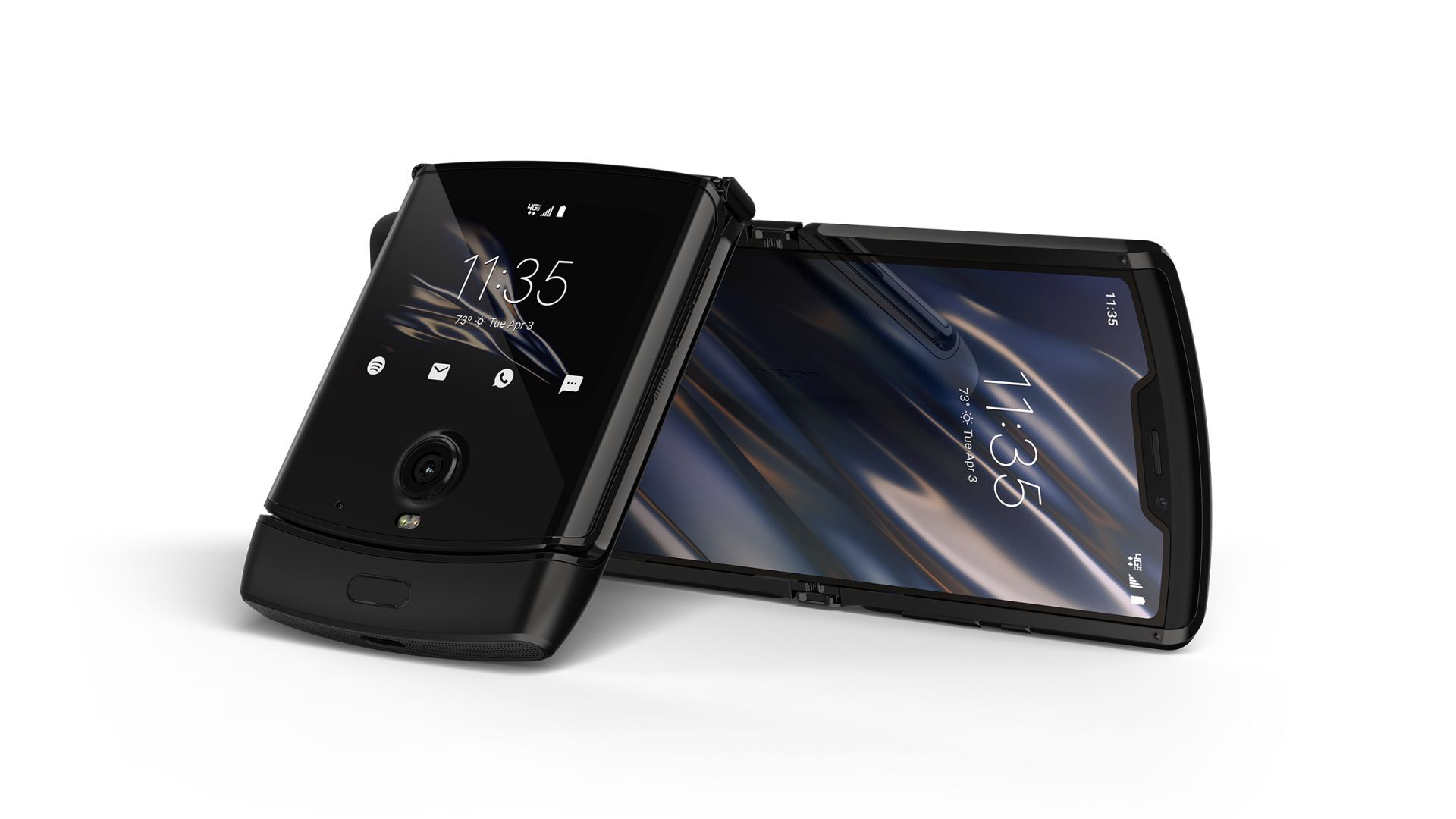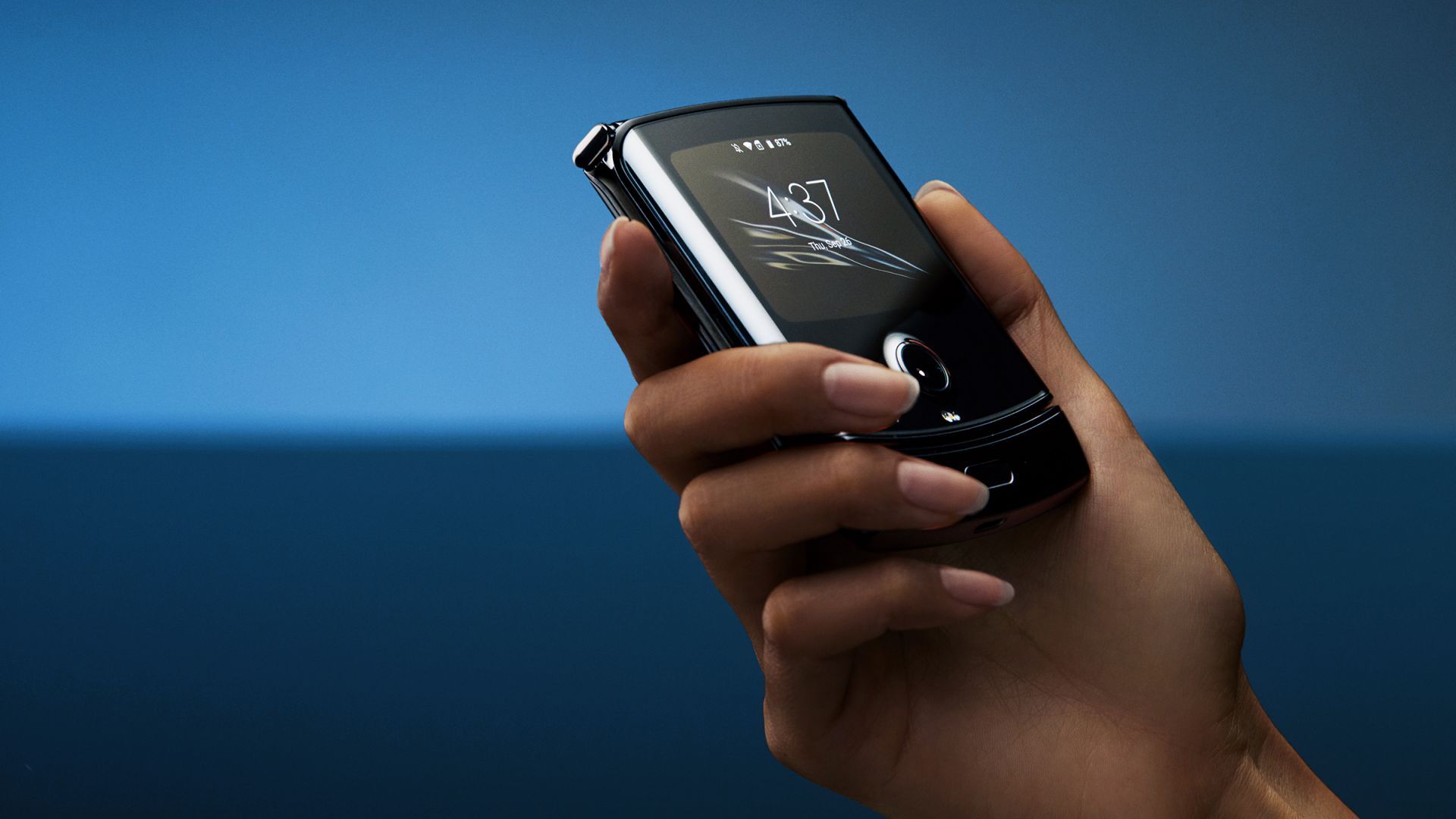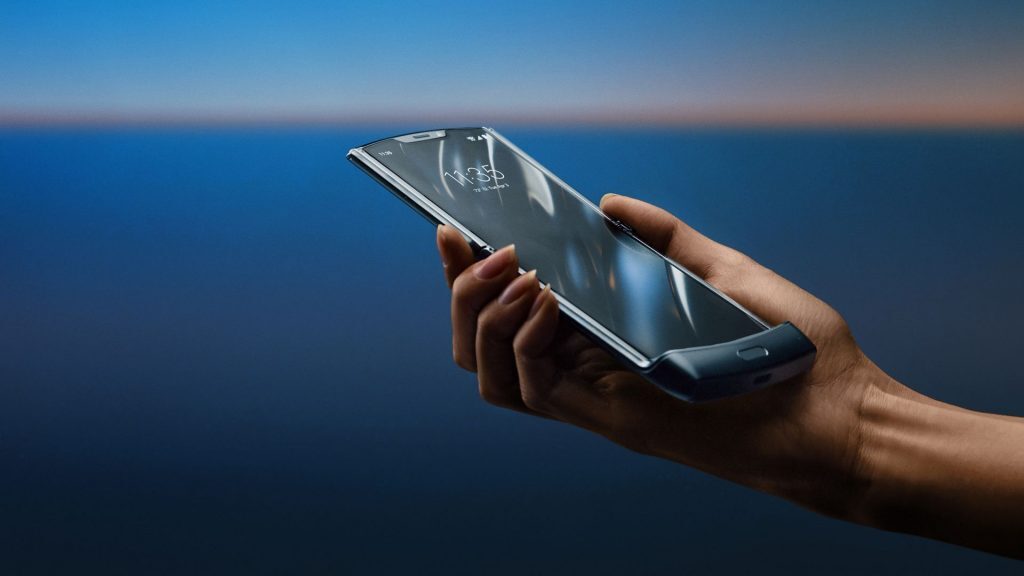We’ve been following the re-re-re-re-release of the Motorola Razr, suitably updated for 2019, for some time. It’s long since time for something official to turn up and that’s just what’s happened. The Motorola Razr is official, it’s expensive, and it’s gonna be awesome. Maybe. If it gets here which, sadly, it may not.
As expected
 The big drawcard with the new Razr is the 6.2in display. It’s a single screen, as we’ve seen with other folding smartphones, capable of folding in half. Which is just as well, because it preserves the old form factor that folks just seem to love. Unfortunately, that’s also the main reason why the handset starts at $1,500, or about R22,300. Which isn’t far off from our original estimate.
The big drawcard with the new Razr is the 6.2in display. It’s a single screen, as we’ve seen with other folding smartphones, capable of folding in half. Which is just as well, because it preserves the old form factor that folks just seem to love. Unfortunately, that’s also the main reason why the handset starts at $1,500, or about R22,300. Which isn’t far off from our original estimate.
There’s a 16MP rear camera, a 5MP selfie-cam, a Snapdragon 710 processor, 6GB of RAM and 128GB of storage in this device. Which, if you match it up to any other device with a similar price-tag, is very much below spec. Most of that R22k+ cost is going towards the flexible POLED (plastic OLED) display, we reckon.
There’s no microSD support, no face scanning and no headphone jack. The Razr does have 15W TurboPower fast charge, a 2,510mAh battery, and a fingerprint scanner. But Motorola really doesn’t want anyone to have to open this smartphone.
Far from home
 Odds are that you won’t manage to officially get your hands on one. Part of the reason for that is that Motorola as a brand isn’t in SA and, when we queried with Lenovo (which owns Moto) we were given the impression there are no plans to bring it in.
Odds are that you won’t manage to officially get your hands on one. Part of the reason for that is that Motorola as a brand isn’t in SA and, when we queried with Lenovo (which owns Moto) we were given the impression there are no plans to bring it in.
But there’s another reason why you might never own one. The updated Razr doesn’t actually feature a SIM card slot, opting for a far smaller eSIM instead. At present, only Vodacom (and more recently, MTN) supports eSIM devices and only those provided by Samsung. This could make importing a Razr a mission and a half.
Still, we absolutely want one. If only for the ‘hidden’ retro mode, which you can see at The Verge. The handset launches in the States from 26 December. If it turns up here, you’ll be the first to know.
Source: The Next Web




